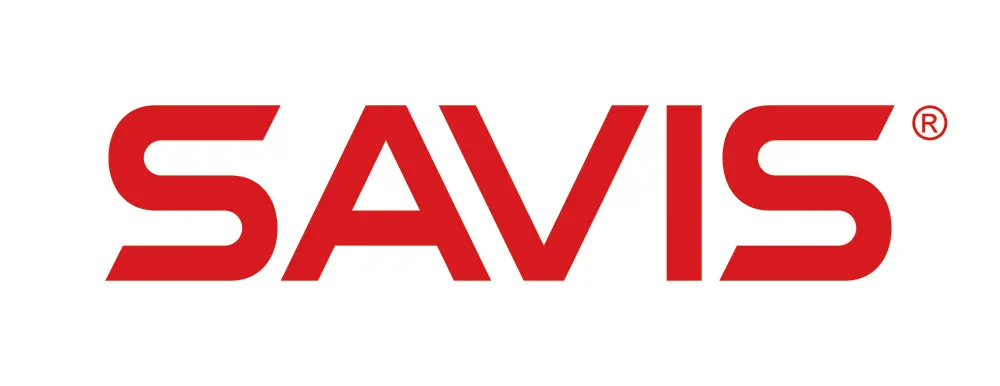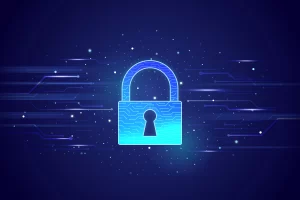Cryptographic keys are essential tools for protecting sensitive data. They are used to encrypt and decrypt data, ensuring that it can only be accessed by authorized individuals. Cryptographic keys are used in a wide variety of applications, including online banking, secure communication, and data storage.
There are two main types of cryptographic keys: symmetric and asymmetric. Symmetric keys are the same for encryption and decryption, while asymmetric keys use a pair of keys, one public and one private. Public keys can be used to encrypt data, but only the private key can be used to decrypt it.
In this article, we will explore the role of cryptographic keys in safeguarding data and discuss best practices for securing them.
Encryption Is Only Secure If Your Keys Are Secure
The security offered by your cryptographic secrets depends on how well you manage and secure them. A lost or stolen key doesn’t do you any good because it’s at risk of compromise. Once a key is compromised, the security of anything it’s been used to secure is at risk. That’s bad news for you and great news for cybercriminals.
You can protect your cryptographic keys using a key management system and by following key management best practices. We’ll speak a little more about that later. But first, let’s look at what cryptographic keys do; then, we’ll explore a few of the most common ways they may be used within your organization.
A Look at What Cryptographic Keys Do
Cryptographic keys are critical elements of public key infrastructure and play important roles in several crucial cryptographic functions:
- Encryption and decryption — We’ve already talked about this, but to recap, encryption is a method of scrambling plaintext data into ciphertext. Depending on the type of encryption used (asymmetric vs symmetric encryption), a cryptographic key is used to encrypt, decrypt, or encrypt and decrypt data.
- Authentication — This verifies that an entity (i.e., a person, client, or device) is who they say they are using public key cryptography. Basically, it’s a way to ensure that someone is authentic and isn’t an imposter because only the authorized user should have access to the private key. (This differs from symmetric keys, which both parties share.)
- Digital Signatures — A digital signature is a value that proves something (e.g., software, code, documents, or emails) hasn’t been modified or tampered with since it was digitally signed. A cryptographic function (hashing) and a cryptographic key are applied to the data to generate the signature. As such, it also helps provide non-repudiation, meaning that someone who sends something to you later can’t deny sending it. It’s akin to signing a document with a notary present: you can’t later refute signing it because they witnessed you doing so.

5 Examples of Cryptographic Key Applications Within an Organization
Not sure if you’re currently using any cryptographic keys within your IT environment? Here are several examples of how your organization or others are likely already using them:
1. Protect In-Transit Data Against Interception Attacks
By enabling HTTPS on your website, you’re securing your data in transit by using transport layer security. You can do this by installing an SSL/TLS certificate on your web server. Using an SSL/TLS certificate on your website ensures that your site users’ data will transmit via secure, encrypted connections.
These connections protect the data in transit. This stops man-in-the-middle attackers who want to intercept, read, modify, or steal your customers’ sensitive data as it transmits between their clients and your server.

For added security, enable the support of TLS 1.2 as a minimum on your server. Furthermore, you can use HTTP strict transport security (HSTS) as another layer of security to prevent downgrade attacks (i.e., prevent cybercriminals from forcing a website to downgrade from HTTPS to HTTP).
2. Secure At-Rest Data on Your Hard Drives and Servers
Encryption isn’t just for securing data in transit (i.e., public key encryption uses). Rather, encryption is also commonly used to secure at-rest data as well. This includes virtually any type of data stored digitally on a computer system. For example, this includes computers, database servers, cloud storage, and messages on your email server.
To encrypt data at rest, you’ll often use a symmetric cryptographic key because it’s fast and requires fewer resources than a pair of asymmetric keys.
But data encryption and decryption aren’t the only tricks up a cryptographic key’s sleeve (so to speak). These digital secrets also have other uses…
3. Authenticate Clients, Users, and Devices on Secure and Open Networks
Digital identity authentication in digital communications is crucial to data security. It’s what validates that you’re really you because a trusted authority has vetted your digital identity.
But what if you want to verify whether a user who is trying to access your protected resources is legitimate? Traditionally, this would involve the user entering their username and password. However, login credentials are easily compromised through phishing scams and malware, it means that it’s no longer a viable way to know that someone is authentic.
An alternative is to use digital certificates to verify your digital identity via public key cryptography:
- A client authentication certificate verifies your identity when accessing a secure web app, virtual private network (VPN), or other protected resources. This can be a certificate you install on your computer or mobile device.
- A device certificate (also known as a PKI device certificate) enables a covered autonomous device to authenticate to your network and transmit data securely. For example, this type of certificate is often used to authenticate IoT devices in healthcare facilities, airports, and manufacturing plants.
In each of these cases, the cryptographic key associated with the certificate proves your digital identity because only you should have access to it. As such, once authenticated, you can access resources you’re authorized to see and use.
4. Exchange Digitally Signed and/or Encrypted Emails
Email security is another important area where organizations rely on cryptographic keys. When you digitally sign an email, you apply a hash function to the email contents and your private key to the resulting hash value.
When an email is digitally signed, the recipient knows:
- the email is authentic because it came from you (i.e., your public key decrypts the hash value)
- the hash value the recipient’s email client calculates matches the one you sent.
Now, let’s say you want to add another layer of security when sending sensitive or confidential data. You can do this using email encryption. Both the email signing and encryption processes involve the use of S/MIME certificates (i.e., email signing certificates). So, as long as you and your email recipient use email signing certificates and you’ve exchanged public keys, then y’all can exchange secure, encrypted emails. This is particularly important for compliance when sending protected customer, financial, or patient health-related data.
5. Digitally Sign Code, Software, and Updates Before Release
Digitally signing your software enables you to show customers and software users that your product is not only authentic but hasn’t been tampered with since it was signed. This is important for software developers, publishers, and service providers that maintain customers’ systems.
You can use a code signing certificate to attach a digital signature to your code. This involves applying a cryptographic hash function to your code and using your private cryptographic key to digitally sign the resulting hash value. When someone downloads your software, their browser or operating system will check to see if the hash value matches. When it does, it’ll display your verified organization information.

If you decide to take your identity a step further, you can use an extended validation code signing certificate. Signing your software with that digital certificate ensures your software is automatically trusted by Windows operating systems and the Edge browser. As a result, it won’t display Windows Defender SmartScreen warnings like this:

Let’s Wrap Things Up With a Few Final Takeaways
Hopefully, we’ve driven home the point that cryptographic keys are crucial to the security of digital assets and data. But much like other precious things in life, they must be protected through all means possible.
Storing your cryptographic keys securely isn’t optional; it’s actually a requirement of many industry and regional regulations. And unless you like the idea of forking over thousands or millions of dollars in noncompliance penalties, legal fees, and lawsuit settlements due to data breaches, then we suggest you pay attention.
Historically, only extended validation (EV) code signing certificates came pre-installed on a hardware security token. Now, all organization validation (OV) code signing certificates will also be delivered via secure tokens by default.
You also can use hardware security modules (HSMs) to protect your other cryptographic secrets. These on-prem appliances and cloud-based storage mechanisms provide a way for your authorized users to use your cryptographic keys without having direct access.





